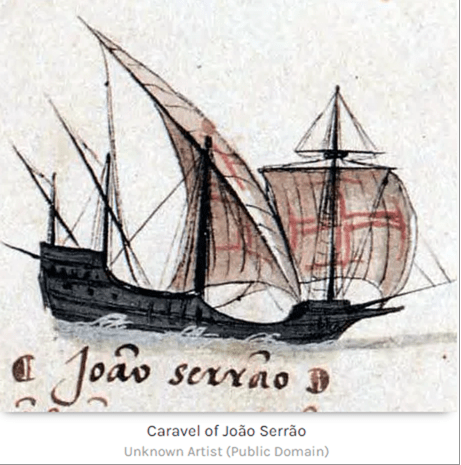Pivot Points
I just returned from Portugal, a gorgeous little country with honest people, safe roads, and excellent food and wine. It was also a world empire once, and so I became curious about how such a tiny country could ever accomplish this.
Sandwiched between the Atlantic Ocean and Spain, Portugal had just over a million people in the 1400s and could never compete with Spain, France, or England in a full-on battle. And so they avoided conflicts whenever possible, preferring trade, compromise, and diplomacy instead.
Still, Portugal managed to colonize large parts of Africa, South America, and even Goa on the coast of India. Portuguese is still the sixth most popular language spoken in the world today.
“Pivot points” in history are points in time when technological innovations vault societies forward at accelerated rates. Take railroads, for example.
In the early 1800s, the simultaneous refinement of the steam engine and manganese-hardened steel allowed the emerging railroad industry to explode over the European and North American continents. Suddenly, countries were no longer reliant on rivers and wagons to move goods, and soon they were moving masses of people, as well. Railways opened up completely new networks where cities could be anywhere instead of just alongside waterways.
The Portuguese Pivot

Back in the 1400s, sailing ships looked pretty much like they had since the days of the Roman Empire. They used sails more than oars, but their basic designs were much the same.
Like the railroad that came along 400 years later, several inventions changed everything in a short span of time. The Chinese introduced the magnetic compass, which aided navigation, but what expanded exploration was the lateen sail.
A lateen sail is a triangular sail that allows ships to sail into the wind by tacking back and forth at 45 degree angles. No longer did ships need to wait in safe harbours until the wind shifted to blow them forward. They could sail in almost any wind.
The Portuguese either invented that or adapted it from the Moors but, regardless, they mastered it first. A small Portuguese ship called a caravel was fast and maneuverable. With a lateen sail, it could sail anywhere.
Columbus – a Genoese captain who lived in Portugal and married a Portuguese woman – used two caravels, with their lateen sails, in his epic 1492 expedition that discovered America. He would never have made it without those unique sails.
Vasco de Gama, the famous Portuguese explorer, used caravels to travel down the coast of Africa in 1497. He travelled all the way around the Horn of Africa for the first time and then on to India. On this trip, he demonstrated the reality of long range sea journeys and established a new fast route to the Orient.
This allowed the Portuguese to upend the Silk Road spice, gold, and slave routes and made them a fabulously wealthy empire for a century.
All because of a triangular sail.
Fibre Pivots and More
The internet began exploding in use around 1995 thanks to emails. But like the ocean routes opened up by the lateen sail and the steel networks of the railroads, it was the laying of a new “railway of wires” that changed everything.
By 2000, we had wrapped the world four times around with fibre optic cable and most of it was empty. Fibre optic cable is superior to copper wires because it carries more data faster and at a lower cost. Suddenly, big volumes of data could be moved anywhere. But why would we ever need such large networks?
Along came Google searches, Facebook postings of millions of pictures, and the iPhone. By 2010, the empty fibre optic cables were completely full. We are laying even more fibre today to transmit pictures, videos, and streaming TV shows.
Companies, nations, and a few lucky inventors became fabulously wealthy as result – just like Portugal in the 1500s.
And what now? Where should we look next for the new pivot point?
Molecular Networks
While we were busy focusing on our new handheld devices, an even more profound invention was being hatched in 2007: CRISPR. These are the “genetic scissors” that allow us to remove and add segments of DNA, recoding life itself.
Like railways and fibre optics, DNA is essentially a network. Information to grow, heal, and defend travels at the molecular level. But, it travels on pathways that are billions of years old.
Just as sails, railroads, and the internet evolved, CRISPR has already advanced several generations from where it was in 2007. We can mix and match DNA much faster and with fewer side effects than we could just a few years ago. There is now a malaria vaccine thanks to CRISPR. Cancer and sickle cell anemia treatments are in the works.
We have yet to see that iPhone moment, though, when one big application changes everything. Will CRISPR usher in a new cancer therapy that works on every cancer? Will it show us how to regenerate nerves for paralyzed people or even create a drug that extends life?
Like de Gama’s faster trade route to India and the railroad, we are at a pivot point in history. Change is coming, and it will be profound.





